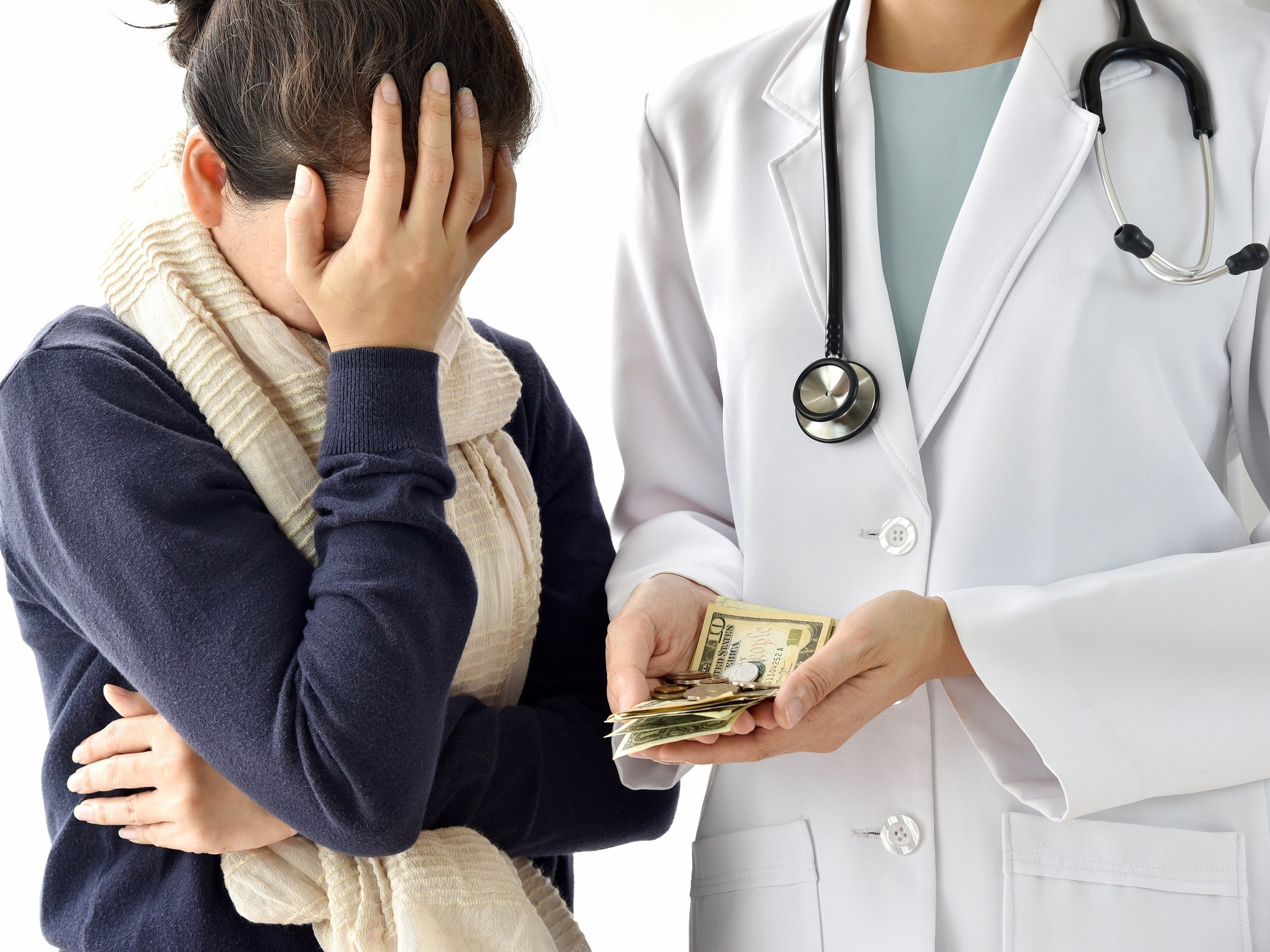Affordable Care Act fails on affordability
Few remain uninsured, but many ‘underinsured’ struggle with costs
More medical patients are struggling to meet high out-of-pocket costs in their health care, such as higher premiums, prescription prices, co-pays, and deductibles. (Shutterstock)
By Ted Cox
The focus of the health-care debate may be shifting from the few “uninsured” patients to the many who are “underinsured” — facing high out-of-pocket costs on premiums, prescriptions, co-pays, and deductibles.
The Associated Press reported over the weekend that — in spite of President Trump’s many and persistent attempts to undercut the Affordable Care Act, also known as Obamacare — about 90 percent of U.S. citizens have health insurance, “largely preserving gains from President Barack Obama’s years.” The AP story adds: “Independent experts estimate that more than one-half of the roughly 30 million uninsured people in the country are eligible for health insurance through existing programs.”
The bigger problem may be that costs are rising in established health-insurance plans through higher premiums, prescription prices, co-pays, and deductibles. The story cited a February report put out by the Commonwealth Fund finding that “compared to 2010, when the ACA became law, fewer people today are uninsured, but more people are underinsured.”
The report pointedly added: “Although the ACA has expanded and improved coverage options for people without access to a job-based health plan, the law largely left the employer market alone.” And rising costs in those plans are leaving an increasing percentage of people “underinsured,” meaning their costs are outstripping people’s ability to pay them.
The report rates people “underinsured” if their out-of-pocket costs over a year are 10 percent of household income, if their costs are 5 percent of household income and they’re making less than double the poverty level ($24,120 for an individual or $49,200 for a family of four), or if their annual deductible is more than 5 percent of household income.
The report emphasizes that none of those definitions includes higher premiums, which also have become a problem.
According to the report, “More than half of Americans under age 65 — about 158 million people — get their health insurance through an employer, while about one-quarter either have a plan purchased through the individual insurance market or are enrolled in Medicaid.”
The study finds that the percentage of people who are “inadequately insured” has remained level at 45 percent since Obamacare was adopted in 2010. Yet “compared to 2010, when the ACA became law, fewer people today are uninsured, but more people are underinsured.”
A survey of 4,225 people conducted a year ago, and compared to similar surveys going back to 2003, found that 12 percent had no insurance coverage, level from before Trump took office, in 2016, but down substantially from the one in five Americans who had no health insurance in 2010. Yet the percentage of people who had year-round coverage but were deemed “underinsured” rose from 16 percent in 2010 to 23 percent last year, up from 22 percent in 2016.
The AP story quoted Drew Altman, president of the Kaiser Family Foundation, as saying, “When you have 90 percent of the American people covered and they are drowning in their health-care bills, what they want to hear from politicians are plans that will address their health-care costs, more than plans that will cover the remaining 10 percent.
“When Democrats talk about universal coverage more than health-care costs, they are playing to the dreams of activists and progressives,” he added, “much less to the actual concerns of the 90 percent who have coverage today.”
Not coincidentally, the Kaiser Family Foundation released a new poll Tuesday finding “strong support for a public option,” meaning access to a government health-insurance plan like Medicare or Medicaid. According to the survey, “most Democrats (85 percent) and independents (68 percent) say they support a public option. Most Republicans (62 percent) oppose a public option.”
But that support was prone to being undercut by argument. If the public option was found to reduce health costs overall through competition or to grant more options to people enrolling in an Obamacare plan, about three-quarters of those surveyed supported it. But if it was suggested that it would “lead to too much government involvement in health care,” support dropped to 40 percent, with 57 percent opposed.
It’s a thorny, contentious issue that figures to be prominent in debates over health care in the presidential campaign through next year.
The Commonwealth Fund report emphasized, however, that Obamacare had withstood Trump’s many attempts to sabotage it, including the federal government recently joining in a Texas suit attempting to kill the program entirely — a suit opposed by Illinois Attorney General Kwame Raoul and the state’s senior U.S. Sen. Dick Durbin.
It stated: “Despite actions by the Trump administration and Congress to weaken the ACA, our survey found no statistically significant change in the adult uninsured rate by late 2018 compared to 2016.”
The Kaiser survey found bipartisan support for key elements of Obamacare should courts attempt to gut the program. “Large majorities — including most Republicans — say it is ‘very important’ to them that the provisions prohibiting insurers from denying coverage to people with pre-existing conditions coverage (72 percent) and charging sick people higher premiums than healthy people (64 percent) be kept in place,” it stated, adding, “Majorities — including about half of Republicans — also say it is ‘very important’ to keep the ACA provisions prohibiting insurers from denying coverage to pregnant women (71 percent) or setting lifetime dollar limits on coverage (62 percent), as well as requiring insurers to cover the full cost of most preventive services (62 percent).”

